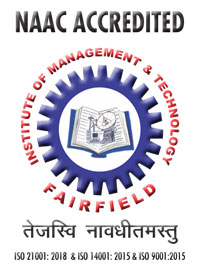If you are looking for a growing career and want to stand aloft the crowd then Chandigarh University is a perfect place for you. The world class facilities in the CU campus, had given me chance to empower myself in every aspect. CU environment is filled with positive vibes for not only Indian students, but anyone from the world can easily adapt to this place.
ABHISHEK ANAND, EEE
Placed in MindTree
I know what I’m after, plus I know my strengths and with the collaboration of Chandigarh University and IBM, I think a new door of possibilities and opportunities is waiting for me.
ADARSH CHAUHAN, B.E. CSE (IBM)
I didn't expect that I would get a placement in the first year itself. It's like a dream come true for me
VIVEK SHARMA, UILS
Placed in Ministers of Power and Chief Minister's Office UP
Faculty at CU is not only supportive, but they put in a lot of efforts on each and every student
NAMAN SHARMA, ME
Placed in Eveready Industries India Ltd
The exposure and facilities provided by Chandigarh University are sufficient enough to carry out promising research
AKASH KUMAR MISHRA, MSC BIOTECHNOLOGY
Placed in Roots Analysis
I really appreciates Chandigarh University for giving me enough opportunities to stand out.
AYUSH SHARMA
Placed with VA Tech Ventures Pvt Ltd
Having the opportunity to study at CU is something that offered me a real-time platform to employ the theoretical concepts and practical skills
LOHIT GAURAV, EEE
Placed in Scope International Pvt Ltd
Getting placed in Microsoft is a really big thing for me as I come from a place where the majority of people even don't know about the company. It's the constant guidance, valuable support and faculty of Chandigarh University that has let me grab such an amazing opportunity.
PREETI SINGH MANHAS, BE- CSE (CLOUD COMPUTING)
Placed in Microsoft
If I could describe my experience at Chandigarh University in a single word, it would be wonderful. The opportunity to sit in Microsoft Placement drive and grab a placement came my way only because of Chandigarh University. I feel I have grown better as a person and gained improved perspective into the world-of-work.
DIKSHA, BE- CSE
Placed in Microsoft
Getting placed in a good company has always been my dream and Chandigarh University has made it true. I got placed in Amazon Web Services. Thanks to the faculties, and Training and Placement Department without whose help this would not have been possible.
RISHAB GUPTA, BE- CSE
Placed in Amazon Web Services
Starting from day one, my experiencing at Chandigarh University was amazing. I got a chance to learn a lot many things and interact with people from around the globe. Learning at CU was difference experience; it changed my overall personality and made me more confident.
Chandigarh University is a great platform to enhance your skills. It not only restricts students to study but also allow indulging in a myriad of extra-curricular activities. All you need to do at CU is some hard work with smart work and success will be all yours.
Department of Career Development at Chandigarh University has been very supportive throughout the journey. My experience at Chandigarh University has been very good. I see myself as a totally transformed person now.
It was a great time I spent in Chandigarh University. CU has amazing and cooperative faculty and campus environment is extremely positive. Training and Placement department has also been very helpful throughout the training episode.
I can certainly say Chandigarh University has made me a better person. It has helped me develop a positive attitude and discover more about myself. Teachers here are very supportive. Big thanks to Chandigarh University.
My experience at Chandigarh University has been more than my expectation. Pursuing an industry sponsored MBA in Banking & Financial Engineering has helped me learn so many things and softwares such as Tally, FLIP and more, which were demanded at HDFC.
I choose Chandigarh University for my studies in master. This university has provided me the platform to explore my abilities and skills beyond my expectations.
VARUN RAJ SHARMA
HDFC Bank
CU has led me to the path of success by effective nurturing and motivation. The world-of-work is extremely different from academics, but CU has groomed me in such a way that I can easily take up any challenges thrown upon me.
I am placed in WALT DISNEY, USA, the happiest place in the World and I owe my success to Chandigarh University. I was groomed to be a professional hospitality manager from day one and the university offered plethora of opportunities in terms of internships, expert interactions and global exposure to shape my career.
SHREYA SACHDEVA
Selected in WALT DISNEY, USA
I grew up on the inspirational feeds of great people like Elon Musk, Howard Hughes, Steve Jobs and only thing I found common was that - The field of your work doesn't really matter as long as it is doing the job of innovation and simultaneously solving people's problems.
VINIT BHAMARE
B.E. – Aerospace Engineering & Budding Entrepreneur
Chandigarh University is one of the largest ambiences, which has widest culture & diversity
RUPONITA, UILS
Placed in North Eastern Electrical Power Corporation Ltd (NEEPCO)
CU has facilitated me with an opportunity to learn in a dynamic environment
UDIT SAREEN, IMB (BIG DATA & ANALYTICS)
Placed in Wipro | Deloitte | TCS
My journey at CU has been glorious throughout. I have experienced a lot new things and gained a plethora of knowledge
ANITA JHAPA (ECE)
Placed in global workforce company - Net2Source
Chandigarh University has helped me discover myself
DIVYAM KUMAR SHARMA, CIVIL ENGINEERING
Placed in DHFL
From the very first day, CU has kept us in a competitive environment. We were imparted with requisite skills such as aptitude, technical and soft skills that are demanded by the companies.
MAYANK SOOD, CSE (BIG DATA)
Placed in Deloitte
First of all, heartiest thanks to CU for bringing numerous top notch companies to the campus. I got placed in Microsoft with a decent package. When I joined CU, I was a mere teenager who had no plans for a career. However, Chandigarh University in a couple of years has enriched me beyond what I believed possible.
PRANAV SALATHIA, BE- CSE
Placed in Microsoft
Since childhood, I was not much interested in studies. Also before coming to CU, I was not familiar with what exactly placements are. However, the motivation and grooming of CU has helped me get placement in leading company like Amazon.
LAKHYA SHARMA, BE- CSE
Placed in Amazon Web Services
CU had played a vital role in making me corporate ready. The faculty, management, and Training & Placement department of CU always ensure that their students get placed in the best companies.
ABHINANDHAN, MBA
Placed in Just Dial
I am very thankful to Chandigarh University for giving wings to my career. The Faculty here is very co-operative and always ready to help. Without the persistent efforts to Training & Placement Department, I would not have been able to grab this placement. Last but not the least, a special thank to CU Management for bringing a plethora of companies to the campus.
In an era of humongous data, companies look for professionals who are hands-on with Big Data. Chandigarh University is one among the very few universities that offers new age MBA course in Business Analytics.
Chandigarh University is a place where you can find a perfect amalgamation of learning, research, fun, cultural diversity and other life preaching activities. I am truly thankful to Training & Placement Department of CU for providing me a platform to enhance my skills and a podium to showcase them.
Studying MBA in Chandigarh University has widened my perspective and has given me an idea of the professional world that too during the academics simultaneously.
RAHUL PATYAL, MBA
Justdial
Chandigarh University has actually boosted my confidence. Now I am even more confident to face the crowd. Shifting from academics to professional life - it has been a fantastic journey for me.
I was expecting an internship by the end of my MBA course but Chandigarh University has provided me a chance to take up internship in the first semester itself - this is a matter of immense pleasure for me.
SHRISTI BHARDWAJ
HDFC Bank
I found the decision to study in Chandigarh University as one among the best of my life. Experienced faculties, approachable management and extensive practical exposure are the assets of this university that have helped us all through.
CU has provided me with the opportunity to live my dream of Working at Microsoft. Heartiest thanks to CU...
PRIYANKA TIWARI, BE- CSE
Placed in Microsoft
I am lucky to have chosen CU as my place to study, I have had internship with Walt Disney and they have offered me a year extension to work with them. I am also placed in companies like Grand Hyatt, Vistara, CU has created a holistic environment where they have delivered more than any student’s expectation. Management is exceptional and is not only providing education and placements but giving us exemplary opportunities to have global careers.
RAJPREET GARAHE
Selected in WALT DISNEY, USA
Chandigarh University is a place where you will get enough chances to showcase your talent other than academics
SHEETAL SHARMA, CSE, PLACED IN VMWARE & CAPGEMINI
Placed in North Eastern Electrical Power Corporation Ltd (NEEPCO)
If I had not been at Chandigarh University, my life would have been totally different
SUPRIYA BHATT, IBM (CLOUD COMPUTING)
Placed in MindTree
When I came to CU, I was an introvert person and could not speak in front of people, but Chandigarh University has enriched me beyond what I believed possible.
ANKIT ARORA
Placed Student at Amazon
Being at CU was being under the exposure of research projects, internships, national international conferences and more
ANSHUL BANSAL, MSC BIOTECHNOLOGY
Placed in Omics International
It has been a wonderful experience at CU until now. The day I joined in, I had a lot of energy and passion but I was blank about where to go and what to do. CU has effectively acted as a pathfinder for me.
GIRISH MEHTA, CSE
Placed in Sapient | IBM | ITC Infotech
I would like to take an opportunity to thank Chandigarh University for bringing Microsoft to the campus. Looking back, I can see CU as an extremely important stepping-stone in my career. Apart from academia, it allowed me to develop additional skills, which are extremely important in the world of work.
SHIVYA BATHLA, BE- CSE
Placed in Microsoft
Getting placed in the Microsoft was something I always wished for and Chandigarh University has made it true. I came to this university because it provides ample opportunities that one can get nowhere else. My message to my junior counterparts is - Have faith in CU and follow the necessary procedures; it will definitely help you turn your dreams into reality.
PARDEEP KAUR SAGGU, BE- CSE
Placed in Microsoft
CU has imparted me with nth capabilities to fulfill aspirations of my parents. Big thanks to all the faculties, DCD trainers and management of Chandigarh University.
VISHAL GUPTA,- CSE
Placed in Amazon Web Services
Training and Placement Department of Chandigarh University has helped me grab the placement offer of Amazon Web Services. Being in CU, I have not only developed my academic skills, but also got an exposure to the range of hands-on challenges.
AAKASH, BE- CSE
Placed in Amazon Web Services
Chandigarh University changed my life completely. While pursuing my course, I was unsure whether I would be able to grab placement or not. But, the stupendous support of my faculty and TPP trainers helped me grab one. Now, I will be shortly joining Tommy Hilfiger as a CRO and I am really happy for this.
My journey at Chandigarh University has been tremendously fruitful. It has provided me with intensive learning, career development as well as personality development.
I would like to extend my sincere gratitude to the Training & Placement Department and the entire faculty of Chandigarh University for putting in their efforts in imparting quality education and aptitude training.
PARDEEP KUMAR
IndusInd Bank
Chandigarh University as a whole has given us an opportunity to work with IBM trainers. Working on various softwares sourced from IBM has better helped us understand the IT market intricacies and challenging market trends.
At Chandigarh University, it's really nice to see high a degree of professionalism whether its academics, preparing students for jobs or higher studies.
SHAGUN TRIPATHI
Zycus Infotech
I was very nervous as it was my first interview, but everything flew smoothly. Chandigarh University is a good platform to make new friends, learn new things and new languages as well. Along with academics, CU has also honed my overall personality by providing numerous extracurricular platforms as well.
SONALI PANDITA
Tommy Hilfiger
Now, I can proudly say that I am a Microsoft Intern - this is really more than I could ever imagine. Thanks to Chandigarh University. It has helped me to grow as a Thinker.
SAI TEJA, BE- CSE
Placed in Microsoft
My experience throughout my journey at Chandigarh University was very remarkable. I really enjoyed the atmosphere and learning culture provided by the University. I have learned a lot from faculty and peers as well. Huquo was the second company that visited campus for our batch and I was the only one in the department to grab the placement. On that particular day, I realized that it was the knowledge and positive attitude induced by CU that made me able to crack the interview.


 Best College in Delhi/NCR,India
Best College in Delhi/NCR,India
























































































































































































































